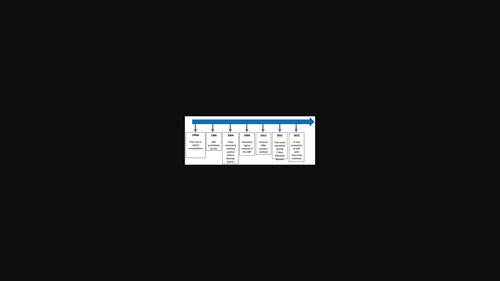当前位置:
X-MOL 学术
›
Drug Test. Anal.
›
论文详情
Our official English website, www.x-mol.net, welcomes your
feedback! (Note: you will need to create a separate account there.)
Homologous blood transfusion and doping: Where are we now?
Drug Testing and Analysis ( IF 2.6 ) Pub Date : 2024-02-26 , DOI: 10.1002/dta.3666 Alexandre Marchand 1 , Magnus Ericsson 1
Drug Testing and Analysis ( IF 2.6 ) Pub Date : 2024-02-26 , DOI: 10.1002/dta.3666 Alexandre Marchand 1 , Magnus Ericsson 1
Affiliation

|
Homologous blood transfusion (HBT) is used for doping in endurance sports since the 1960s. The blood comes from a compatible donor, that is, someone with a compatible ABO and rhesus blood group. Despite been prohibited by the IOC in 1985, no detection method was available until 2003. Then came the idea to use red blood cells (RBC) minor blood groups antigens that constitute an “identity” card of someone's RBC to detect the presence of a second RBC population. The method validated for doping control samples uses flow cytometry after incubation of isolated RBC with eight to 12 primary antibodies against specific minor blood groups antigens. The presence of double populations of RBC is revealed by a major and a minor peak in a fluorescence histogram. The sensitivity was estimated sufficient to detect HBT for a few weeks. Despite the complexity and cost of the method, right after its application in 2004, several cases of HBT were identified but the number of cases dropped rapidly over the years. In the 2010s, other ways to detect HBT were developed and evaluated: indirect detection using the Athlete Biological Passport approach, and a few years later forensic DNA analysis to establish the presence of two different DNA in a blood sample after HBT. Despite the high specificity of the latter, the sensitivity was recently questioned in vivo. Nowadays, the flow cytometry method remains the method of choice for HBT detection and recent investigations helped to simplify the method and increase its specificity and sensitivity.
中文翻译:

同源输血和兴奋剂:我们现在在哪里?
自 20 世纪 60 年代以来,同源输血 (HBT) 就被用于耐力运动中的兴奋剂。血液来自相容的捐献者,即具有相容的 ABO 血型和恒河猴血型的人。尽管在 1985 年被国际奥委会禁止,但直到 2003 年才出现检测方法。随后出现了使用红细胞 (RBC) 次要血型抗原的想法,该抗原构成某人红细胞的“身份证”,以检测是否存在第二个血型。红细胞群体。在将分离的红细胞与针对特定次要血型抗原的 8 至 12 个一抗一起孵育后,对兴奋剂对照样品进行验证的方法使用流式细胞术。荧光直方图中的主峰和次峰揭示了红细胞双群的存在。估计灵敏度足以检测几周的 HBT。尽管该方法复杂且成本高昂,但在 2004 年应用后,就发现了几起 HBT 病例,但多年来病例数量迅速下降。 2010 年代,开发和评估了其他检测 HBT 的方法:使用运动员生物护照方法进行间接检测,几年后进行法医 DNA 分析,以确定 HBT 后血液样本中是否存在两种不同的 DNA。尽管后者具有高特异性,但其体内敏感性最近受到质疑。如今,流式细胞术方法仍然是 HBT 检测的首选方法,最近的研究有助于简化该方法并提高其特异性和灵敏度。
更新日期:2024-02-26
中文翻译:

同源输血和兴奋剂:我们现在在哪里?
自 20 世纪 60 年代以来,同源输血 (HBT) 就被用于耐力运动中的兴奋剂。血液来自相容的捐献者,即具有相容的 ABO 血型和恒河猴血型的人。尽管在 1985 年被国际奥委会禁止,但直到 2003 年才出现检测方法。随后出现了使用红细胞 (RBC) 次要血型抗原的想法,该抗原构成某人红细胞的“身份证”,以检测是否存在第二个血型。红细胞群体。在将分离的红细胞与针对特定次要血型抗原的 8 至 12 个一抗一起孵育后,对兴奋剂对照样品进行验证的方法使用流式细胞术。荧光直方图中的主峰和次峰揭示了红细胞双群的存在。估计灵敏度足以检测几周的 HBT。尽管该方法复杂且成本高昂,但在 2004 年应用后,就发现了几起 HBT 病例,但多年来病例数量迅速下降。 2010 年代,开发和评估了其他检测 HBT 的方法:使用运动员生物护照方法进行间接检测,几年后进行法医 DNA 分析,以确定 HBT 后血液样本中是否存在两种不同的 DNA。尽管后者具有高特异性,但其体内敏感性最近受到质疑。如今,流式细胞术方法仍然是 HBT 检测的首选方法,最近的研究有助于简化该方法并提高其特异性和灵敏度。











































 京公网安备 11010802027423号
京公网安备 11010802027423号